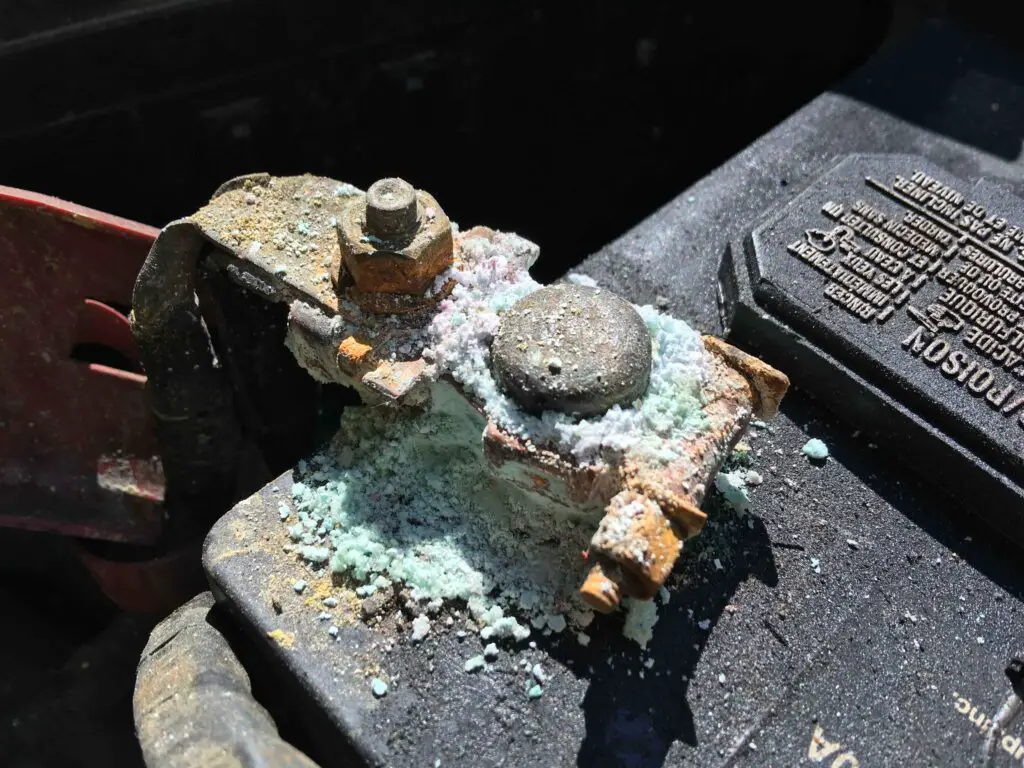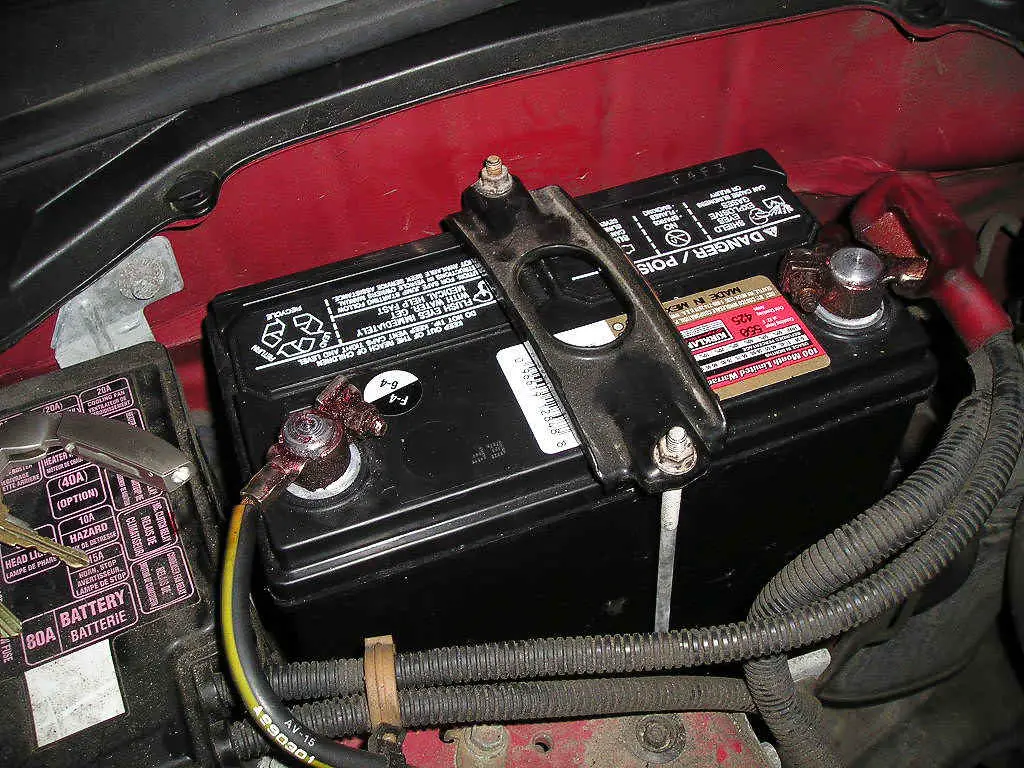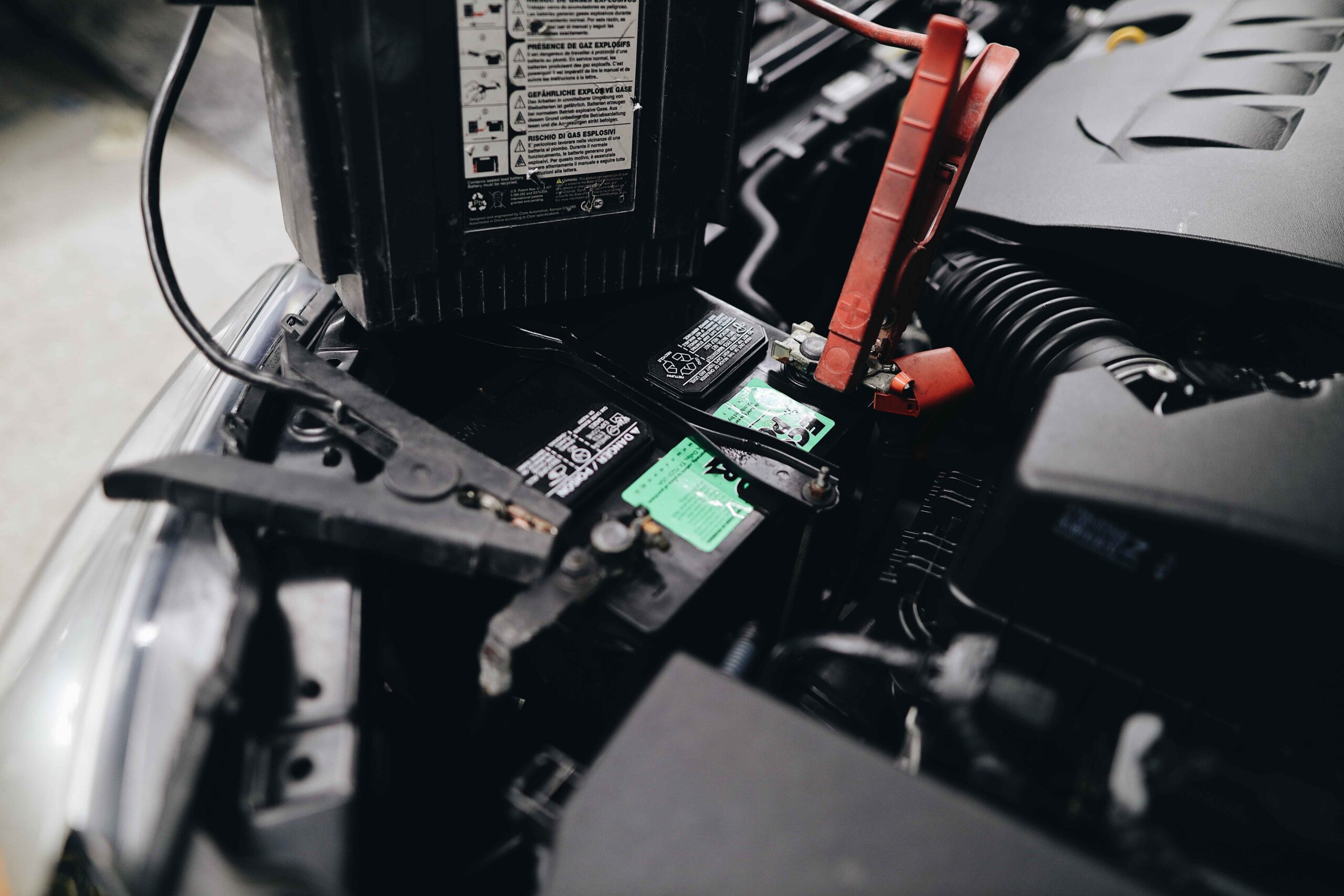If you’ve ever found yourself stranded with a car that won’t start, you know how crucial a healthy battery is. In this comprehensive guide, we’ll dive into the nitty-gritty of common car battery problems and how to tackle them effectively.
Contents
Understanding Car Battery Issues
At any time and in any location, problems with a car’s battery might sneak up on any person who owns a car.
The last thing you want is to find yourself in a situation where you are unable to move because of a bad battery in the middle of nowhere.
You may save a lot of time, money, and unnecessary stress by learning how to cure common problems with your car’s battery and by gaining an understanding of how to fix them.
To help you stay prepared:
Recognize Early Warning Signs:
- Slow Engine Cranking: Indicates potential battery issues.
- Electrical Problems: Look for flickering lights or other electrical issues.
- Unusual Odors: Smell any unusual odors near the battery, which could signal trouble.
Keep Essential Tools in Your Car:
- Jumper Cables: Always have a set in case of emergencies.
- Portable Jump Starter: A handy device for jump-starting without another vehicle.
- Basic Tool Kit: Includes tools for minor repairs and battery maintenance.
Understand Your Battery’s Lifespan:
- Typical Lifespan: Most car batteries last 3-5 years.
- Factors Affecting Longevity: Climate and driving habits can impact battery life.
Practice Preventive Maintenance:
- Regular Voltage Checks: Monitor your battery’s voltage regularly.
- Clean Terminals: Keep battery terminals clean to prevent corrosion.
- Secure Mounting: Ensure the battery is securely mounted to minimize vibrations.
Know How to Safely Jump-Start Your Car:
- Correct Connection: Ensure jumper cables are connected correctly to avoid damage.
Consider investing in a battery health monitor.
- Real-Time Updates: Provides updates on battery condition.
- Predict Potential Failures: Helps in predicting and preventing battery issues.
Be Mindful of Factors That Can Deplete Your Battery:
- Extreme Temperatures: Both hot and cold temperatures can affect battery performance.
- Short Trips: Frequent short trips don’t allow the battery to fully recharge.
- Parasitic Drains: Aftermarket accessories can drain the battery when the car is off.

5 Common Car Battery Problems
With the information gathered above, let’s delve into some of the most common car battery problems and how to address them:
1. Dead Battery
When you turn the key and hear the familiar click-click sound, total silence, or dim dash lights, it’s a clear sign that your car’s battery is either low or dead.
Dead battery scenario and how to tackle it:
- Symptoms of a Dead Battery:
- Silence: When you turn the key, there’s no sound—no cranking, no engine roar.
- Dim Lights: Your headlights and interior lights appear weak or don’t work at all.
- Electrical Malfunctions: Accessories like power windows, radios, and air conditioning fail to function.
- Causes of battery death:
- Natural Aging: Car batteries have a limited lifespan (usually 3-5 years). Over time, they lose capacity.
- Parasitic Drain: Leaving lights, chargers, or accessories on when the engine is off drains the battery.
- Extreme Temperatures: Cold weather reduces battery efficiency, while heat accelerates chemical reactions.
- Faulty Alternator: If the alternator fails to charge the battery, it eventually dies.
- Fixing a Dead Battery:
- Jumpstart: Use jumper cables and another vehicle to jumpstart your car. Connect positive (+) to positive and negative (-) to negative terminals. Start the working car, let it charge your battery, and try starting your car.
- Battery Charger: Attach a battery charger to the dead battery. Allow it to charge for about an hour.
- Replace the battery. If it’s beyond revival, get a new battery. Choose the right type (lead-acid, AGM, or lithium-ion) for your vehicle.
2. Corrosion
Battery terminals coated in a white, powdery substance? That’s corrosion. To address this issue:
Safety First:
- Protective Gear: Wear protective gloves and eyewear.
- Engine Off: Ensure the engine is off and cool.
Identifying Corrosion:
- Appearance: Look for a white or blue-green powdery substance or a crusty buildup on the terminals.
Steps to Clean the Terminals:
- Disconnect the Battery:
- Negative Terminal First: Always remove the negative (-) terminal first.
- Positive Terminal: Then disconnect the positive (+) terminal.
- Clean the Terminals:
- Cleaning Solution: Use a mixture of baking soda and water.
- Application: Apply the solution with an old toothbrush or wire brush.
- Stubborn Buildup: For tough buildup, use a battery terminal cleaner tool.
- Rinse and Dry:
- Rinse: Use clean water to rinse away the cleaning solution.
- Dry: Thoroughly dry the terminals with a clean cloth.
- Apply Protection:
- Protective Layer: Use a thin layer of petroleum jelly or a battery terminal protector spray. This helps prevent future corrosion.
- Reconnect the Battery:
- Positive Terminal First: Connect the positive (+) terminal first.
- Negative Terminal: Then connect the negative (-) terminal.
- Secure Connections: Ensure connections are tight but not overtightened.
Regular Maintenance:
- Monthly Checks: Check for corrosion on a monthly basis.
- Clean as Needed: Clean the terminals as needed to prevent buildup.
Address the underlying issues:
- Persistent Corrosion: May indicate a charging system problem.
- Professional Check: Consider having your alternator and voltage regulator checked.
Tips for Prevention:
- Keep Clean and Dry: Ensure your battery is clean and dry.
- Use Terminal Protectors: Use terminal protectors or felt washers.
- Secure Mounting: Ensure your battery is securely mounted to minimize vibration.
3. Low Voltage
Given that low voltage on a car battery can cause major problems, it’s great that you’re fixing it early on. Here are some methods to raise the voltage on an automobile battery:
Look for any corrosion or loose connections at the battery terminals. If necessary, clean them; also, guarantee a safe fit.
Use jumper wires to link your car’s battery to another vehicle if its voltage is noticeably low. Starting your car requires a boost, which jumpstarting may provide.
Attach a battery charger to the low-voltage battery and charge it in accordance with the manufacturer’s recommendations. This can allow it to regain capacity.
Consider replacing the battery if it’s broken or old. Low voltage occurs when a worn-out battery does not hold charge as efficiently.
4. Electrolyte Leaks
Electrolyte leaks can be a serious issue for car batteries. The electrolyte is a mixture of sulfuric acid and water inside the battery cells. When leaks occur, it can lead to several problems:
- Corrosion: Leaked electrolyte can corrode battery terminals, cables, and nearby components. This affects electrical conductivity and can hinder proper charging and starting.
- Reduced Capacity: Leaks cause electrolyte loss, reducing the battery’s capacity. It won’t hold a charge as effectively, leading to shorter run times.
- Safety Hazard: Sulfuric acid is corrosive and can harm skin, clothing, and other materials. It’s essential to handle leaks carefully and avoid contact.
- Cell Damage: Leaks can damage battery cells, affecting their ability to generate voltage. This can lead to premature battery failure.
If you notice any signs of electrolyte leaks (such as visible fluid around the battery), address the issue promptly.

5. Faulty Alternator
Your car’s alternator is like a backstage magician, quietly ensuring that your battery stays charged while the engine is running.
However, when it engages in a game of deception, problems arise. Here’s what you need to know:
Signs of a Failing Alternator:
- Dim Lights:
- Headlights Flickering or Dimming: If your headlights flicker or are not as bright as they should be, it might indicate an alternator issue.
- Warning Signal: Consider it the alternator’s way of signaling a problem.
- Dashboard Warning Light:
- Battery-Shaped Light: A warning light on your dashboard, typically shaped like a battery, indicates that the alternator needs attention.
- Electrical Problems:
- Malfunctioning Power Windows: Power Windows may become slow or unresponsive.
- Radio Glitches: The radio may experience interruptions or display errors.
- Erratic Wipers: Windshield wipers may move unpredictably or at incorrect speeds.
Fixing the alternator:
- Check the belt.
- Inspect the Serpentine Belt: Look for any loose or damaged serpentine belts. Tighten or replace them if necessary.
- Perform a voltage test:
- Measure Output Voltage: A mechanic can measure the alternator’s output voltage. If it is below the required level, the alternator may need to be replaced.
- Inspect brushes and bearings.
- Replace Worn Components: Internal components like brushes and bearings wear out over time. Replacing these parts can often revive your alternator.
Battery Voltage Chart
Below are figures that show the battery voltage levels and what they indicate:
- 12.6 volts or higher: Fully charged
- 12.4 volts: 75% charged
- 12.2 volts: 50% charged
- 12.0 volts: 25% charged
- Below 12.0 volts: Discharged
How to Disconnect a Car Battery
Knowing how to properly disconnect and connect your car battery is crucial for any car owner.
Whether you’re replacing a dead battery, performing routine maintenance, or ensuring your vehicle remains safe and reliable, mastering this skill is essential.
the steps below will walk you through the safe and effective steps for disconnecting and connecting your car battery, along with important considerations to keep in mind before you get started.
- Preparation:
- Turn Off the Engine: Make sure your vehicle is turned off and parked in a well-ventilated area.
- Gather Tools: You’ll need a wrench, safety gloves, and safety glasses.
- Disconnecting the Battery:
- Locate the battery. It is usually found under the hood, but some cars have it in the trunk.
- Identify Terminals: The negative terminal is usually marked with a minus (-) sign and a black cable; the positive terminal is marked with a plus (+) sign and a red cable.
- Remove the Negative Cable First: Loosen the nut on the negative terminal and carefully remove the cable. This prevents any accidental short circuits.
- Remove the positive cable. Follow the same process for the positive terminal.
- Connecting the New Battery:
- Attach the Positive Cable First: Connect the positive cable to the positive terminal and tighten the nut.
- Attach the negative cable. Connect the negative cable to the negative terminal and tighten the nut.
- Double-Check: Ensure both terminals are securely tightened.
- Finishing Up:
- Check for Corrosion: Clean any corrosion from the terminals with a battery terminal cleaner or a mixture of baking soda and water.
- Test the Battery: Start your car to make sure the new battery is working properly.
Other Considerations:
- Dispose of the Old Battery Properly: Take your old battery to a recycling center or auto parts store.
- Regular Maintenance: Check your battery terminals for corrosion regularly and clean them as needed.
- Safety First: Always wear safety gear and handle the battery with care.

Preventing Car Battery Problems
- Regular Maintenance Frequently clean and inspect your battery cables and terminals for corrosion or damage.
- Proper Charging Ensure your alternator is functioning correctly and providing sufficient charge to your battery while you drive.
- Avoiding Parasitic Drains Always turn off all electrical systems when your car is not in use.
- Protecting Your Battery in Extreme Temperatures During hot weather, park in shaded areas or use a car cover to shield your battery from heat. In cold weather, consider using a battery warmer or insulator.
Choosing The Right Car Battery
Choosing the right car battery is a journey that takes you through the realms of size, brand, power specifications, and age.
The perfect fit is a battery that nestles snugly in its tray, preventing unnecessary movement and potential damage.
Brand is also important, with the vehicle’s manual often holding the key to the recommended make.
Power specifications are the heart of your battery’s performance. The reserve capacity (RC) tells you how long your battery can keep your vehicle’s electrical system running without the engine.
The Cold-Cranking Amps (CCA) are a measure of your battery’s ability to start your vehicle in cold weather conditions.
Last but not least, age plays a crucial role in your battery’s life story. Typically, a car battery bids farewell between three and five years, signaling it’s time for a replacement.
So remember, choosing the right car battery isn’t a random pick. It entails combining these elements to ensure that your car has the best possible power!

Conclusion
And there you have it—your quick, 5-step guide to fixing car battery woes! Remember, the key to a healthy car battery lies in regular maintenance and care. By understanding the ins and outs of your car’s battery, you’ll be well-equipped to troubleshoot common issues. And when the going gets tough, don’t hesitate to call in the professionals. With these steps, you’re not just fixing problems; you’re powering up for a smooth, uninterrupted journey every time you turn the ignition!
FAQs
Q1. How often should I check my car’s battery’s condition?
It’s a good practice to check your car’s battery condition at least once a month, especially during extreme weather conditions.
Q2. Can I jump-start my car with any other vehicle?
Yes, you can jump-start your car with another vehicle, but make sure to follow the correct procedure to avoid damage.
Q3. What should I do if I encounter a battery warning symbol on my dashboard?
It is best to have a qualified mechanic check your battery and charging system if you notice a battery warning symbol on your dashboard.
Q4. How long does a car battery typically last?
The lifespan of a car battery can vary, but on average, it lasts between 3 and 5 years.
Q5. Is it safe to handle car battery maintenance myself?
While car owners can perform simple maintenance like cleaning terminals, it’s best to seek professional assistance for more complicated problems to ensure safety and proper repair.



Leave a Reply